 Insect Stamp of Rwanda
Insect Stamp of Rwanda Insect Stamp of Rwanda
Insect Stamp of RwandaTutsi sl. of a nomad influenced Hutu of indigenous people in the 15th century, and Rwanda built a kingdom and it passed through the part neighbor of the German East Africa, the Belgian rule in the end of the 19th century and became independent as a republic in 1962. Hutu rule continued after independence, and a slaughter case for Tutsi occurred. The Tutsi power that fled into Uganda after 1994 started a counterattack and held the whole land, and an aspect changed completely, and Hutu escaped in Zaire, Tanzania. A Hutu slaughter case in a refugee camp happens, too.
Ten kinds of normal stamps which drew the insect from Rwanda in 1973 were issued.
Ten kinds of normal stamps describing the beetle were issued in 1978. The insect of the Africa specialty is ecologically drawn for all.
Two kinds of insect stamps as the protection of plant were issued in 1993.
Rwanda
1973.1.31 Normal Stamp
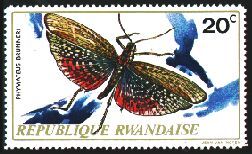 |
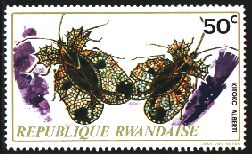 |
|---|---|
| Bush Locust Phymateus viridipes (Pygomorphidae) |
Lace Bug Ammianus alberti (Tingidae) |
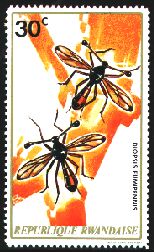 |
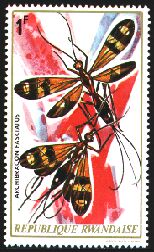 |
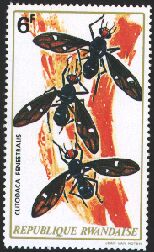 |
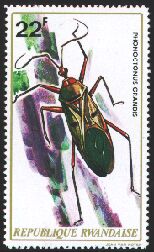 |
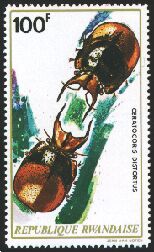 |
|---|---|---|---|---|
| Stalk-eyed Fly Diopsis fumipennis (Diopsidae) |
Braconid Wasp Archibracon fasciatus (Braconidae) |
Signal Fly Clitodoca fenestralis (Platystomatidae) |
Assassin Bug Phonoctonus grandis (Reduviidae) |
Shield-backed Bug Ceratocoris distortus (Plataspidae) |
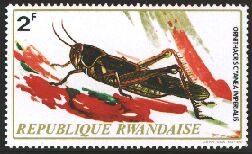 |
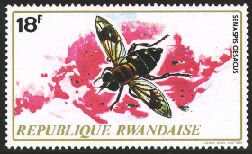 |
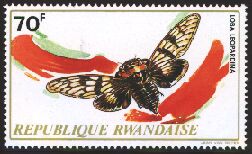 |
|---|---|---|
| Bush Locust Ornithacris cyanea (Acrididae) |
Flower fly Senapsis oesacus (Syrphidae) |
Cicada Loba leopardina (Cicadidae) |
1978.5.22 Normal Stamp
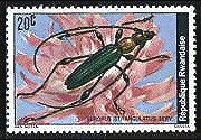 |
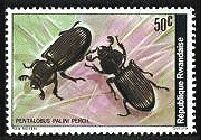 |
|---|---|
| Longhorn Beetle Euporus strangulatus (Cerambycidae) |
Bess Beetle Pentalobus palini (Passalidae) |
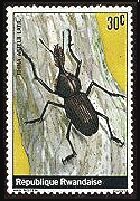 |
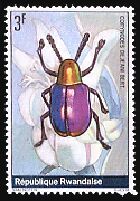 |
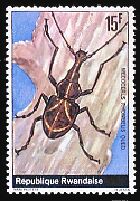 |
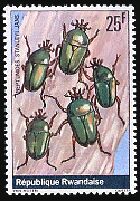 |
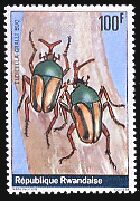 |
|---|---|---|---|---|
| Weevil Rhina afzelii (Rhynchophoridae) |
Leaf Beetle Corynodes dejeani (Chrysomelidae) |
Fungus Weevil Mecocerus rhombeus (Anthribidae) |
Scarab Beetle Neptunides stanleyi (Scarabaeidae) |
Scarab Beetle Eudicella gralli (Scarabaeidae) |
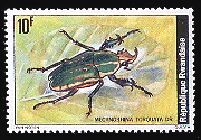 |
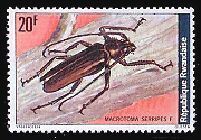 |
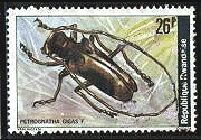 |
|---|---|---|
| Flower Chafer
Mecynorrhina torquata (Cetoniinae) |
Longhorn Beetle Macrotoma serripes (Cerambycidae) |
Longhorn Beetle Petrognatha gigas (Cerambycidae) |
1993.6.15 Protection of Plant Stamp
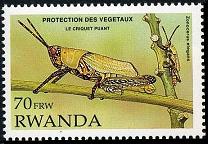 |
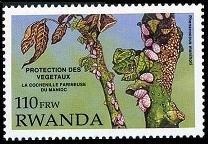 |
|---|---|
| Bush Locust Zonocerus elegans (Pyrgomorphidae) |
Cassava Mealybug Phenacoccus manihoti (Pseudococcidae) |
Lace Bug is a friend near Shild-backed Bug which inhales the juice of a vegetable leaf. There is an ear-like border in the back brisket. A wing is transparent and the center of the back in the state where it closed serves as a pattern of Z characters of a dark color. The whole is beautiful at the pattern of meshes of a net, and the origin of the name of Lace Bug is because the whole form resembles the ruling. The reverse-side side of leaves, such as a cherry tree, a pear, an apple, and dotage, is crowded with an imago and a larva. The marks which inhaled the juice serve as a spot of light brown, and are known also as a fruit tree noxious insect.
 NEXT
NEXT
 to Stamp
to Stamp
 to HomePage
to HomePage